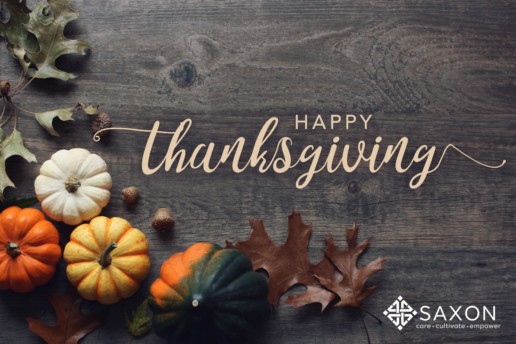The Post-Holiday Funk Is Real
Getting out of the post-holiday funk is a difficult task in itself. After a holiday season filled with parties, breaks, food and time off, it can be hard to snap back into work mode. Here are a few things you can do to get out of that holiday funk:
Somewhere around the third week in December work in many offices starts to slow down. There are holiday parties. Customers and clients may be harder to reach. Energy and motivation wanes. And many of us sign off from work completely to spend the holidays with friends and family.
And then January arrives, and it’s time to get back in the swing of things. But, after being out for a week or two, it can be hard to snap back into work mode. If you’re feeling sluggish and unmotivated, you’re not alone. There are several reasons for this kind of the post-holiday funk — and, fortunately, there are things you can do to get out of it as well.
Focus forward
It’s common around New Year’s Day to look back at the past year. Research on construal-level theory suggests that the more distant you are from anything in time, space, or socially, the more abstractly you think about it. Getting out of the office and looking at the whole year leads you to think about your contribution and not just the tasks you did. This is natural and healthy. After all, your contribution in the last year was not the 16,471 emails you sent, but rather the relationships you solidified, the projects you oversaw, and the collaborations you continued as a result of those emails.
But while you’re likely to be proud of some things you accomplished, you may also be thinking about some of your failures. These are often the source of many people’s New Year’s resolutions.
Of course, noticing last year’s failures can be disheartening. And around the new year, you may end up in a cycle of thoughts about what you could have done differently in the past. This kind of rumination can actually heighten feelings of depression and anxiety, which sap your motivation.
When you get back to work, it’s important to start looking forward to the new year rather than back on the past one. Treat the goals you want to accomplish as new challenges and a source of energy not a penance for things you didn’t get done last year. Focusing on the future — and seeing new opportunities to succeed — can help you to generate the energy to get started.
Get specific
Your reflections on the past year might also lead you to commit to making changes. This is a good thing but not if your commitments are abstract, like “be more productive,” “get a new job,” or “become a better leader.”
In fact, these abstract goals can be paralyzing. They’re simply too big to make meaningful progress toward. Instead, turn your goal into specific actions that when added up lead to the desired outcome. This kind of specific plan is called an implementation intention. It requires that you break the general goal down into tasks that can be put on your calendar.
This specificity has two benefits.
First, it requires you to think through what actually has to be done to achieve the goal. You may discover that you don’t know all the steps or that some of the steps are ones that involve skills you need to learn. In that case, you might want to find a mentor or coach who can help you.
Second, being specific forces you to grapple with your densely packed schedule. One reason why people often fail to achieve important goals is that they cannot find the time to perform the tasks that would lead to success. When you try to add new actions to your agenda, you are forced to figure out what can be moved, delayed, or delegated in order to put you on the road to following through on your commitment.
Make the right social comparisons
A third possible source of post-holiday funk is social comparison.
Humans don’t evaluate things on an absolute scale. Instead, we assess our success relative to some standard. Often, we do that through the process of social comparison, in which we compare ourselves to someone else.
There are two kinds of social comparisons. Upward social comparisons involve comparing yourself to someone better off than you are along a particular dimension. For example, you might see a high-school friend who just got a promotion, or a college friend who just bought a car that you dream of owning some day. These comparisons tend to make you feel bad about yourself, because they highlight what other people have that you don’t, whether it’s money, social standing, or particular relationships. Downward social comparisons are comparisons to someone worse off than you. These comparisons generally make you feel good about yourself and your situation.
Unfortunately, both kinds of comparison can sap your motivation. Upward social comparisons can frustrate you, knowing that other people you know are more successful, happier, or wealthier than you are. Because of the way people curate their social media, if you just look at where people are taking vacations or what they post about their jobs, it’s easy to believe that most people are doing better than you are, which may lead you to feel like giving up.
When you make downward social comparisons, you feel better about what you have and what you have accomplished, but you aren’t motivated to continue pushing forward. Instead, it makes you satisfied with where you are and, often, complacent. The energy you need to motivate yourself comes from being dissatisfied with something about the present, along with developing a plan to get what you want.
You can’t stop yourself from making social comparisons, but you can explicitly manage those comparisons to motivate you. For example, you can find a close rival — someone who is doing slightly better than you are along some dimension, but whose performance is close enough to your own that you can see how you could take some actions to reach their level.
You can also make social comparisons to your past self. Take a look at your trajectory. Recognize that even if you haven’t achieved all of your goals, you have improved over time. Use that recognition of your own growth to spur you to keep working to reach new heights.
No one wants to start the year off in a rut. And yet many of us begin January too focused on the past and feeling bad about what we have yet to accomplish. With some small changes in your perspective, though, you can hit the ground running in the new year.
SOURCE: Markman, A. (03 January 2020) "The Post-Holiday Funk Is Real" (Web Blog Post). Retrieved from https://hbr.org/2020/01/the-post-holiday-funk-is-real?ab=hero-subleft-3
How To Not Get Stuck With Other People's Work Over The Holidays
Begin preparing yourself at work for the holiday season so you aren’t stuck with others work during the holidays. Read on for more tips that will help you to avoid being overloaded with work.
Few people find themselves happy when they are inundated with work on vacation days that had been planned in advance. The month of December is a busy month. People are trying to finish up projects before the holidays and leaving for vacation. Sometimes, finishing up a project involves dumping it or part of it onto someone else’s work plate, many times a junior employee or someone in a non-management position. You don’t have to feel helpless. Here are three tips that will help you to avoid being overloaded with work:
1. Plan ahead.
When you are approaching a time of year in which you know that many people take off from work, take time to plan ahead. Know when your deadlines are, break the work into chunks and get to work now. If you know that a particular colleague has a tendency to hand off work just before they leave for their vacation, inquire with them ahead of time to give yourself more time to complete the work. Stay on top of your work so that you have some room for projects that arise unexpectedly.
2. Distribute the workload among your teammates.
Just because you receive a work assignment does not always mean only you have to complete it. Work can be shared, and allowing others to take on some of the work is an important management skill. The higher you rise in your career, the more you will depend on others to support you in achieving work goals.
If you are part of a team, ask your manager if the work can be distributed among multiple people. The more you spread out the work, the less work each person has to do and the more efficient and productive each person can be.
Yemen Is A "Living Hell for Children"
Ways For Financial Professionals To Respond When A Client Falls Ill
The Slam Poets, Spoken Words, And Intersectionality Of Burque Revolt
3. Prioritize the work.
Not all work has to be completed now. Some tasks can be done later. Look at the work that has been passed on to you, and break the work down into individual tasks. Successful people prioritize. Can the tasks be completed after the holidays? If you are unsure, ask your manager or the person that passed the work along. Make no assumptions. Ask for information to make a decision that ensures the quality of the work product and that your vacation is not compromised.
Prepare yourself at work for the holiday season so you don’t get stuck with other people’s work. Plan ahead, share the load and prioritize. Leaders don’t work harder. Leaders work smarter. Be happy this holiday season. Work smarter, and demonstrate your leadership.
SOURCE: Blank, A. (4 December 2018) "How To Not Get Stuck With Other People's Work Over The Holidays" (Web Blog Post). Retrieved from https://www.forbes.com/sites/averyblank/2018/12/04/how-to-not-get-stuck-with-other-peoples-work-over-the-holidays/#2ce47b263006
How To Stay Sane During The Holidays
Do the holidays cause your stress levels to rise? The holiday season can be the most stressful time of the year for many people. Read on for tips on remaining balanced, healthy and happy during the holidays.
The holiday season can often be the most stressful time of the year. It's often when we gather with our family, sit through a performance review with our boss, and plan for the new year. One cannot help but feel a mix of joy and anxiety as they approach this time. If you're feeling the pressure of the next few weeks, you're not alone!
As fitness and wellness expert Carrie Dorr says, "When it comes to being healthy, few of us realize that mental well-being is key to holistic health and remaining balanced in busy times. Our social calendars can take a toll on our mental and physical health." As the founder of Life Smart, Carrie is a go-to online wellness guide dedicated to providing women with the tools they need to enhance their holistic health through fitness, nutrition, and mental care.
She shares her best tips for remaining balanced, healthy and happy during the holidays:
Fitness
Even a 5 or 10-minute workout can significantly improve your overall well-being both physically and mentally. As Carrie explains, "Exercise makes your body stronger and also stimulates the production of endorphins which combat stress."
If your schedule doesn't allow for workout classes or gym sessions, at the very least, make time to breathe and stretch—every day. "Breathing relaxes our nervous system and helps to lower both heart rate and blood pressure. Flexibility and range of motion are key to posture, dexterity, and vitality!" Carrie says. She recommends doing both together daily.
#Futureproofing: How ExxonMobil Is Helping Tackle America's STEM Workforce Challenges
Yemen's Children Dream Of Peace
The Senate Declared November National College Application Month
Last but not least, don't forget to put together a workout playlist. Music is a powerful motivator and can have an amazing impact on your exercise. From Carrie's experience, matching the song to the pace of your workout helps optimize it. Higher beats per minute (BPMs) for faster exercise like cardio and lower BPMs for slower exercise like strength training and yoga. Check out Carrie's playlist for this month here.
Nutrition
Snack well and often to keep your metabolism humming and to avoid binging. Keeping nutrient-dense snacks on-hand, such as nuts, is a good way to build the habit. Be sure to drink plenty of water throughout the day. Keep a bottle on your desk for a visual reminder.
"With cold and flu season, increased travel and exposure around more people over the holidays," Carrie says, "it’s important to eat foods that help boost your immune system so you can prepare for the cold and flu season ahead." Some examples include fruits and vegetables (they pack a serious antioxidant and fuel your body with the essential vitamins and minerals), bone broth (an amazing tonic that helps repair the gut lining and reduce inflammation) and meals seasoned with ginger, turmeric, onions or garlic (they are well-known fighters of infection, bugs and bacteria).
Another key aspect of your nutrition is your sugar intake. As refined sugar tends to alter your immune system for hours after consumption, it makes you more vulnerable to germs. Replace high-sugar treats such as soda, candy bars and cupcakes with slices of apples, pear or a cup of blueberries. If you're really craving one of those sweets, Carrie recommends trying out healthy cookie recipes here.
Mental health
Anticipating losing sleep? Do not let that happen! It's essential for your body to repair itself and while most of us love to do it, there are times when insomnia will creep in. To reduce the anxiety and pressure around sleep, Carrie finds it helpful to maintain an evening practice that sets the stage for a relaxing night. Write down five wins (big or small) of the day before bed in a journal. What's a better way to enhance your mood?
Surprisingly, another way to feel good about yourself is to put your time and energy in service to others. Do something kind for another person without expectations. "Kindness can shift you out of your own singular perspective, where it’s easy to be consumed by personal obligations and problems, into a place where you remember that we are all in this together!" Carrie Says. There are so many simple ways to do this on an ongoing basis and even more opportunities around the holidays. Among other things, you can adopt a family for gift-giving, help feed the homeless in your community or visit the elderly at a local senior center and sing with them.
Most importantly, during the holidays, be sure to have FUN! If you are feeling overwhelmed by the season, shift your focus to the memories that await you. Plan out some seasonal things to do: go see a local play, bake cookies, play holiday songs on the piano, or be goofy with friends in public and laugh. A little laughter goes a long way.
SOURCE: Joseph, S. (2 December 2018) "How To Stay Sane During The Holidays" (Web Blog Post). Retrieved from https://www.forbes.com/sites/shelcyvjoseph/2018/12/02/how-to-stay-sane-during-the-holidays/#596473932750
Pecans, Marshmallows and Sweet Potatoes?
Happy Holidays! In celebration of the holidays, the Saxon crew has decided to share one of our favorite holiday recipes for this month’s Fresh Brew! We hope you all have a safe and happy Thanksgiving!
Stuffed Sweet Potatoes with Pecan and Marshmallow Streusel
Ingredients
- 12 large sweet potatoes
- 3/4 cup (11/2 sticks) unsalted butter, at room temperature
- 3/4 cup light brown sugar
- 3/4 cup all-purpose flour
- 1/4 teaspoon ground cinnamon
- 1/4 teaspoon salt
- 1 cup toasted pecan pieces
- 1 cup miniature marshmallows
Directions
- Preheat the oven to 400 degrees F.
- Wash the sweet potatoes, scrubbing them well to remove any dirt. With a fork, prick the sweet potatoes in a couple of spots and place them on a sheet pan. Bake for about 45 minutes, or until a knife inserted in the center goes in easily.
- In a large bowl, mix the butter, brown sugar, and flour together until it’s crumbly-looking. Add the cinnamon, salt, pecans, and marshmallows; fold the streusel topping together to combine.
- Slice the sweet potatoes lengthwise down the center and push the ends towards the middle so it opens up. Stuff the sweet potatoes generously with the streusel topping and return to the oven. Bake for another 20 minutes, or until the topping is bubbly and brown.

This recipe was provided by Food Network. If you’d like to visit the original source, please click here.
**Holiday Hours
Our office will be closed Thursday, November 22. We will be open Friday, November 23 from 8:30 a.m. – noon. We wish you a happy Thanksgiving filled with family, friends and good food!
4 tips for workplace gift giving
The holidays should be a time of bliss and celebration. However, this often isn’t the case when the stress of deciding if coworkers will make it on your holiday shopping list sets in.
So, as you make that list, check it twice, and consider these key points before you find yourself in an uncomfortable workplace gift exchange.
The company gift-giving policy
Almost every large company has one, and it isn’t just excluded to company clients and outside business partners. It also applies to gifts given between employees. While many companies allow for gifts to be given below a certain dollar amount, make sure to look for this policy or contact Human Resources before purchasing any gifts or organizing a gift-exchange.
Reasons for giving
While all gifts should be exchanged in the spirit of the holidays, some people may have ulterior motives. If you have recently begun negotiations for a raise or promotion, you will want to steer clear of buying your manager anything that seems to be trying to influence their decision. Typically, the flow of gifts should always be downward, not upward within a company.
Office culture
This is especially important if you are new to the company. Did people start talking about the annual gift exchange before Thanksgiving? Or have you already received an invite to the holiday team lunch?
Among a survey of U.S. workers, 45 percent say they give their office peers a gift during the holiday season, and 56 percent spend more than $20 doing so.
It’s important to use your best judgment to determine the office norm and if you need to, ask a co-worker to confirm your suspicions.
Be inclusive
If your company does allow for gifts to be exchanged, make sure everyone on the team is included. A great way to do this is by offering an opt-in vs opt-out gift exchange. This way everyone is invited, but not everyone has to choose to participate. This is mindful of employees who may be experiencing a financial hardship that won’t allow for unnecessary purchases this holiday season.
With all things considered, remember that gift giving at work is a company specific characteristic and the best place to look to find answers to your questions may be internal. Who knows, the coworker sitting three cubicles down playing Christmas music in October and the coworker next to him whose personality closely resembles the Grinch, may actually be in agreement on a policy like this one.
You can read the original article here.
Source:
Taylor K. (20 November 2017). "4 tips for workplace gift giving" [Web blog post]. Retrieved from address https://workwell.unum.com/2017/11/4-tips-for-workplace-gift-giving/
’Tis the Season for a Slice of Wellness Training
Originally posted November 29, 2013 by Chris Kilbourne on https://safetydailyadvisor.blr.com
At the beginning of this year's holiday season, take a moment to remind your employees that good nutrition is important to good health. Use the video in today's Advisor as a concise and fun way to drop nutrition reminders in among the holiday festivities.
In order to get the nutrition they need every day to stay healthy, employees must develop and maintain healthy eating habits. Here's a video that takes a light-hearted approach toward providing facts about nutrition and the important employee wellness topic of having healthy eating habits.
https://www.youtube.com/watch?v=Hv66ItR_F24&feature=player_embedded
I'm sure you’ve heard that good nutrition is important to good health. But how?
Well, good nutrition helps you in many important ways. For example, eating healthy food helps to prevent diseases like heart disease, diabetes, and high blood pressure and maintain a healthy weight.
In order to get the nutrition you need every day to stay healthy, you must develop and maintain healthy eating habits. Unfortunately, many Americans have very unhealthy eating habits.
Healthy eating means eating three nutritious meals a day, consuming reasonable portion sizes, limiting intake of fat, sugar, and salt, snacking sensibly between meals, avoiding fad diets, and balancing calorie intake with physical activity.
Proper nutrition depends on a well-balanced diet that includes carbohydrates, fiber, protein, and some unsaturated fat. Carbohydrates give your body the energy it needs to function effectively all day. Carbohydrates are found in fruits, vegetables, bread, cereal, pasta, rice, and milk and milk products. In fact, 45 percent to 65 percent of your daily calorie intake should come from carbohydrates. You also need about 14 grams of dietary fiber for every 1,000 calories you eat. Protein is another essential nutrient, and you should get 10 percent to 35 percent of daily calories from proteins.
Most Americans eat more protein than they really need to stay healthy. Protein is found in meat, poultry, fish, eggs, nuts, milk and milk products, grains, and some vegetables and fruits.
Some protein-rich foods such as meat are also high in fat and cholesterol. To keep healthy, you should consume less than 10 percent of your daily calorie intake as fat. Most of your fat intake should be unsaturated, as opposed to saturated, fat. Saturated fat is found in foods such as high-fat cheese, high-fat meat, butter, and ice cream.
Nuts, vegetable oil, and fish are good sources of poly- and monounsaturated fats.
Health experts also say you should consume less than 300 milligrams of cholesterol a day. Cholesterol is a fatty substance found in animal-based foods such as meat, eggs, and whole milk.
Sugar is found naturally in foods such as fruits, vegetables, and milk and milk products. Some foods include added sugar, and these foods are less nutritious than foods containing only natural sugar. To keep healthy, try to avoid added sugar, which provides no nutritional value and also contributes to tooth decay.
Also, remember that fluids, vitamins, and minerals are part of good nutrition, too. You need about eight glasses of water or other low-sugar fluids a day.
Finally, even though you've got a lot of great choices here in your fridge, I'm sure you eat out sometimes. When you do, remember to make healthy choices. Restaurant or takeout food can be high in fat, sugar, and salt, and low in required nutrients. When you eat food prepared outside your home, try to pick lower-fat foods, choose smaller portions, go broiled or baked instead of fried, order a vegetables or salad, and skip dessert.
For more information on nutrition, visit www.blr.com. Here you’ll find lots of information on wellness. BLR® specializes in employee training, so be sure to check out all of their employee wellness training resources as well as other training topics.
Why It Matters
- Giving your employees nutrition information can help keep them healthy and on the job.
- Healthy employees will cut down on your sick leave costs and your healthcare insurance expenses.
- Healthy employees who are eating the right balance of nutritious foods are more likely to be more productive as well.
- The bottom line is that a healthy amount of wellness training can provide a healthy return on investment for your organization.
6 reminders for employees before Thanksgiving
Originally posted on https://ebn.benefitnews.com
This Thanksgiving, looking at the mess of the Affordable Care Act’s rollout, your employees might just be most grateful to retain their employer-sponsored health plans, but there’s always plenty to celebrate on the fourth Thursday of November. Between food, travel, and more food this Nov. 28, be sure to mark the occasion well. And from all of us at EBN, enjoy your holiday!
Here are six things to remind your employees before they leave for their Thanksgiving breaks. We look at the most popular travel destinations, as well as some Fodor-recommended ones. Perhaps most important at the workplace: don’t forget to set your out-of-office alerts.
More and more Americans are forgoing mere turkeys for the Frankenstein monsters that are Turduckens: a turkey stuffed with a duck stuffed with a chicken, like Russian nesting dolls of poultry. Each November, one store in Louisiana sells more than 5,000 Turduckens, which average 1,600 calories a serving. Human resources administrators probably won’t make many friends by encouraging people to watch what they eat on Thanksgiving of all days, but indulgence shouldn't become a habit if you want to work on your wellness goals.
Did you know Thanksgiving was originally supposed to be a fast, not a feast? The settlers of Plymouth Rock were more likely to “celebrate” with prayer and abstaining from food, but the Wampanoag Indians brought their own harvest festival traditions to the table. So if you need an excuse to under-indulge this holiday, just think to yourself, “I’m only behaving like a pilgrim.”
According to data from Hotwire.com, these are Americans’ biggest destinations next week. The Macy’s Thanksgiving Day Parade keeps Manhattan on the top of the list, but be sure to book in advance and allow for extra travel time if you plan on hitting any of the following spots, ranked from No. 1 to 5: New York, Chicago, Las Vegas, Orlando and Los Angeles.
According to Fodor’s Erin Gifford, it’s tough to beat a Thanksgiving spent the old fashioned way in Plymouth, Mass., but she has more surprising recommendations as well. In Leiden, Holland, for example, the pilgrims spent 11 years before continuing on to the New World, and local churches and museums always mark turkey day. For something closer to home, Gifford recommends Dana Point, Calif., famous for its 10,000-runner Turkey Trot on a scenic route up the coast.
Thanksgiving time off ranges from merely day-of to more than the entire week, so be sure your staff puts up their voicemail and email out-of-office messages. Be sure to say when you will be back at work and what to do in case of an emergency.
The biggest shopping day of the year immediately follows Thanksgiving, and even if your business doesn't need to prepare, your employees likely do. Holiday shopping gets off with a bang, and experts claim the economy relies on it. Still, it might be a good opportunity to encourage saving – the personal finance website NerdWallet says that more than 90% of 2013 Black Friday ads contain the exact same items and prices as last year. Talk about serving leftovers the day after Thanksgiving!
The Evil Presence that Lurks in the Workplace at Halloween
Originally posted by Denise Rand on https://hrdailyadvisor.blr.com
Halloween can be a very scary time of the year for HR pros! An evil presence is out to kill the efforts being put into company wellness programs—Halloween candy. Yes, it seems like Halloween becomes the end of year "kickoff party" for calorie-, sugar-, and fat-filled holiday celebrations in workplaces, sabotaging companies’ health efforts.
And besides candy, it’s a safe bet there will be plenty of orange-colored cakes, cupcakes, donuts, and even orange bagels within easy reach. However, there are some proactive steps the HR department can take to keep your employees from falling victim to a sugar rush and extra holiday pounds.
Health experts Dian Griesel, PhD, and Tom Griesel, authors of the book The TurboCharged Mind (January 2012, BSH), offer the following tips to avoid a crash:
- Make an office resolution to keep out of the office all the extra candy that the kids brought home or that didn’t go to the trick-or-treaters.
- Start the day by brewing a pot of pumpkin-flavored coffee or tea. This should help get coworkers in the spirit of things.
- Bring in a variety of fruit for morning break and colored veggies for enjoyment at lunch or afternoon break.
- Take a lunchtime walk to see the change of foliage and get some fresh autumn air.
- If your “office bakers” must produce Halloween treats, have them try making a gluten-free, low-, or sugar-free pumpkin pie. There are even many recipes for crust-less, no-shortening versions that make things even more healthful—and easy.
10 ways to limit holiday party liquor liability
The holiday season is upon us, and if you’re planning a company party or awards banquet, you might want to give some thought to your policy on alcohol.
Serving employees alcohol at company-sponsored parties and events can have serious and sometimes tragic consequences for your workers and your organization.
For example, if an employee drinks too much and gets into an accident on the way home, you could be held liable. Plus, sexual harassment complaints tend to increase when alcohol consumption goes up.
Here are some suggestions to help prevent alcohol-related problems—including sexual harassment and auto accidents—and limit your exposure to liability if you do decide to serve liquor:
- Don’t serve liquor. The simple solution to the problem is not to serve alcohol at all—though this may not be realistic.
- Limit consumption. You may be able to limit the amount people drink by having a cash bar or by providing tickets good for only two or three drinks. Also, stay away from sweet punches containing alcohol. These can make it difficult for people to tell how much alcohol they have consumed—until it’s too late.
- Close the bar early. One to two hours before the end of the event, stop serving alcohol. If possible, continue serving food even after the bar is closed.
- Have the party off-site. If the party takes place at a hotel or restaurant with a liquor license—and the facility’s employees serve the drinks—you’re less likely to be held responsible.
- Establish an alcohol policy. Institute a company policy to let your employees know that excessive drinking at company functions will not be tolerated. Also remind workers about the dangers of drinking and driving.
- Offer transportation. Make taxi vouchers available to provide the option of cab rides at company expense.
- Avoid company business. To help make the event a social affair, keep any discussion of business to a minimum and hold the party outside of regular business hours.
- Make company functions voluntary. It’s a good idea to make attendance at company parties where liquor is consumed entirely voluntary.
- Invite families. Inviting spouses and dates tends to make the event more of a social occasion rather than a business function.
- Don’t invite customers, clients, or business associates. Inviting the people your company does business with increases the likelihood that the event is an official company function.
- Watch for minors. The law can come down hard on you if you allow minors to drink alcohol. If a significant number of your employees are minors, or if you expect families to attend (e.g., the event is a company picnic), consider serving no alcohol at all.
Although it’s impossible to exercise absolute control over your employees, the key to avoiding liability, as well as keeping workers safe and out of legal trouble, is to do everything you can to prevent them from drinking too much and getting behind the wheel.








